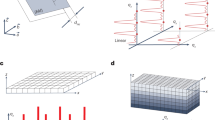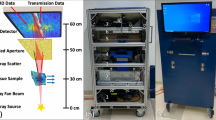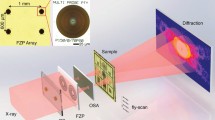Abstract
IN our letter in NATURE of November 161, we described a new technique for obtaining X-ray powder patterns using flat specimens. Dr. Brentano maintains2 that the method is, in its principles, the same as his focusing method. Dr. Brentano has always used beams diverging from a line source of X-rays, and it follows that for great source to specimen distances the diffracted beams are focused at glancing angle. This is the only resemblance between his method and ours.
This is a preview of subscription content, access via your institution
Access options
Subscribe to this journal
Receive 51 print issues and online access
$199.00 per year
only $3.90 per issue
Buy this article
- Purchase on Springer Link
- Instant access to full article PDF
Prices may be subject to local taxes which are calculated during checkout
Similar content being viewed by others
References
R. A. Stephen and R. J. Barnes, NATURE, 136, 793 (1935).
J. Brentano, NATURE, 136, 988 (1935).
W. H. George, NATURE, 136, 180 (1935).
Author information
Authors and Affiliations
Rights and permissions
About this article
Cite this article
STEPHEN, R., BARNES, R. New Technique for obtaining X-Ray Powder Patterns. Nature 137, 532–533 (1936). https://doi.org/10.1038/137532a0
Issue Date:
DOI: https://doi.org/10.1038/137532a0
Comments
By submitting a comment you agree to abide by our Terms and Community Guidelines. If you find something abusive or that does not comply with our terms or guidelines please flag it as inappropriate.



